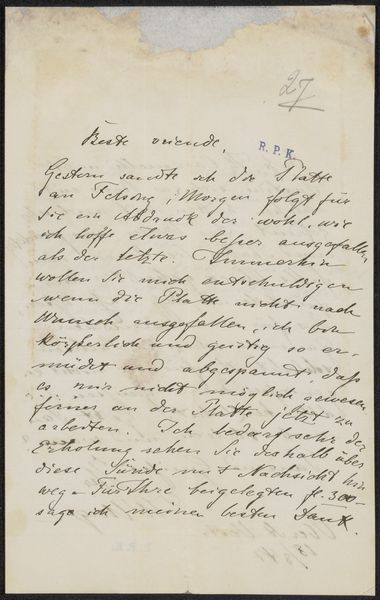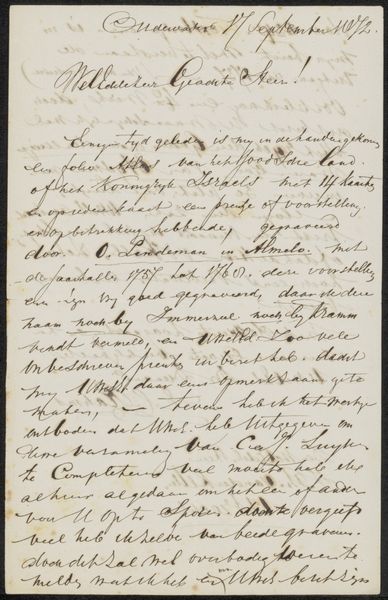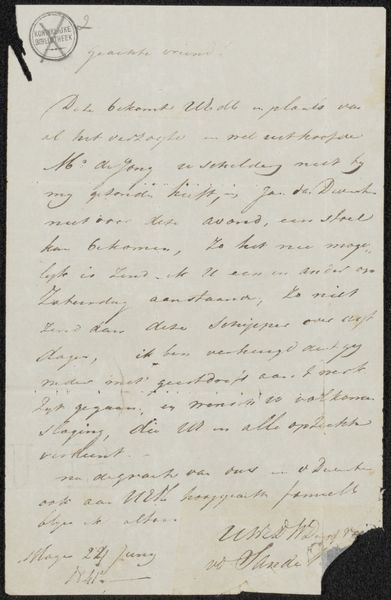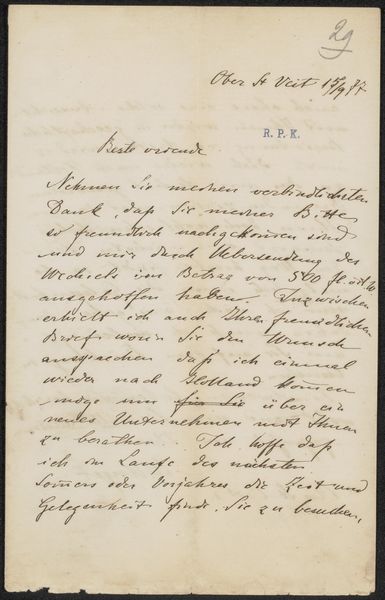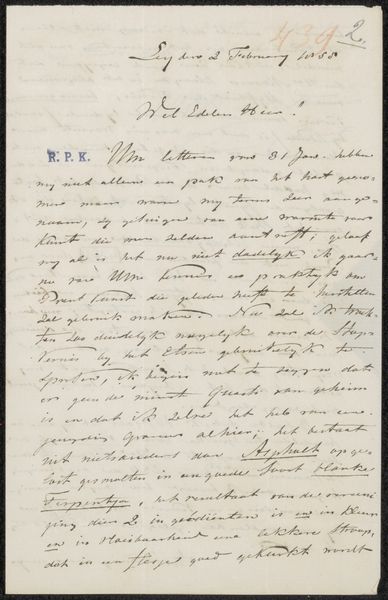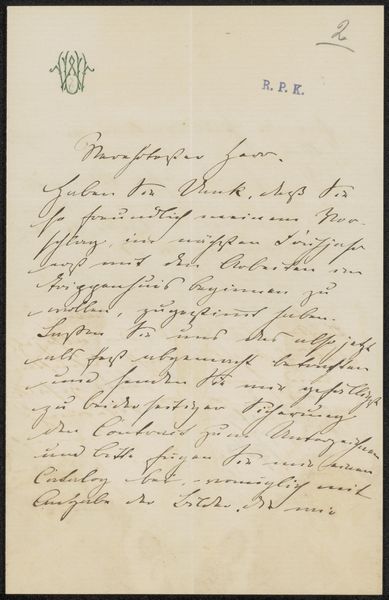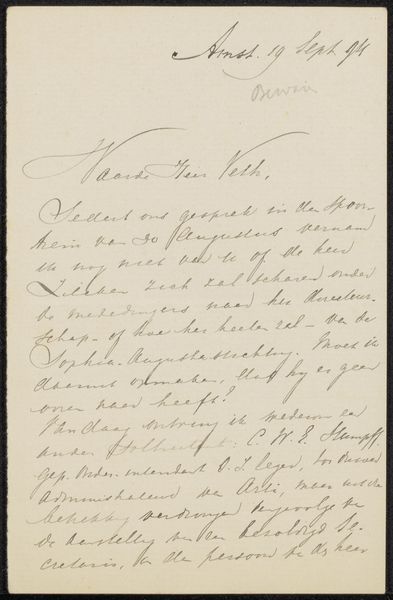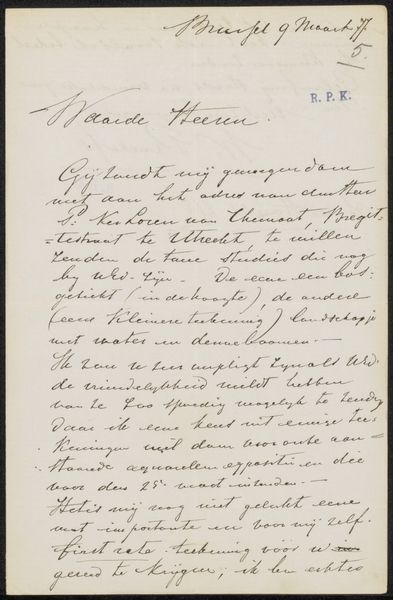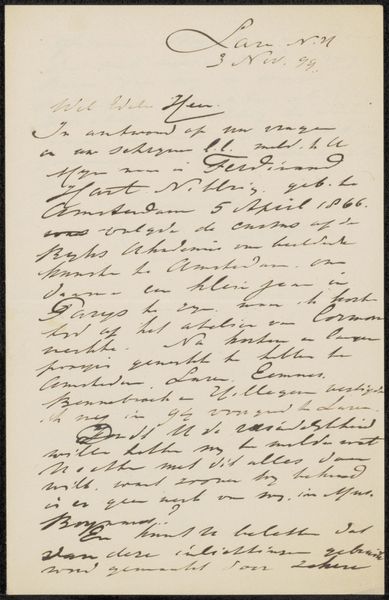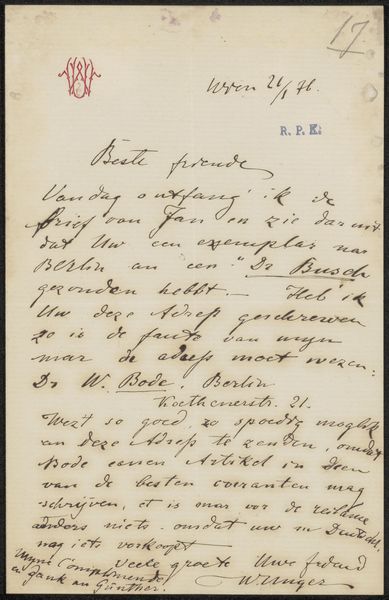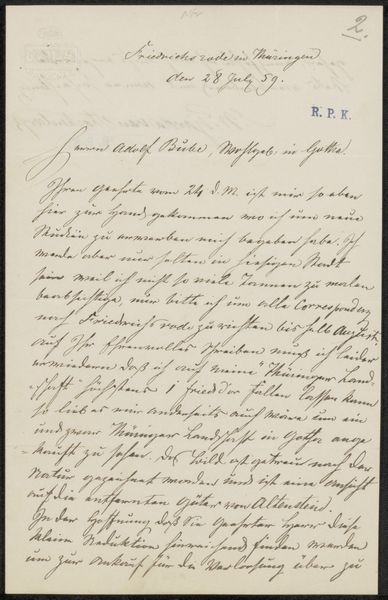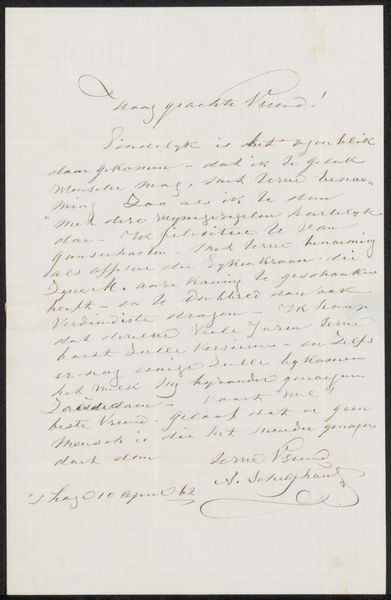
Copyright: Rijks Museum: Open Domain
This letter to Frans Buffa en Zonen was composed by William Unger in 1875. At first glance, the letter's appearance is defined by the contrast between the pale cream color of the paper and the dark brown ink forming the tight, linear script. The composition follows a traditional structure where the upper part of the letter establishes the location and date, followed by salutations and the body of the text. Unger’s handwriting presents a rhythmic pattern across the page, and the structural arrangement of text blocks creates visual coherence and a sense of crafted order. The text itself becomes a field of signs where the letterforms and their arrangements symbolize communication and personal connection. However, the artwork can also be seen as a challenge to fixed meanings. The act of handwriting—with its inherent imperfections and expressive qualities—contrasts with standardized print, making it a unique expression of the author's personality. The formal quality of the handwritten script invites us to reflect on the very nature of communication and its evolution through time.
Comments
No comments
Be the first to comment and join the conversation on the ultimate creative platform.
